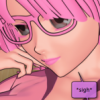DAZ Studio & Bryce @ 4K
 magicjava
Posts: 152
magicjava
Posts: 152
Thoughts?
You currently have no notifications.
 magicjava
Posts: 152
magicjava
Posts: 152
Thoughts?

Licensing Agreement | Terms of Service | Privacy Policy | EULA
© 2025 Daz Productions Inc. All Rights Reserved.
Comments
Can you explain yourself please?
Your title and note is rather vague to say the least
Thank you.
Any thoughts on using DAZ Studio and Bryce to generate 4k resolution?
Greetings,
Still not getting your actual question. I do it all the time, usually for images to be downsampled to lower resolutions.
I recall a particular wall texture I used in this image (warning, implicit violence) that did not respond well to the higher resolution; you could see the jpg artifacting. (The original is 3072x4096, and the downsampled version looks significantly better.) For the most part, though, most scenes have high enough resolution textures to not be a problem.
If you have the luxury of using your own textures, avoiding jpg's would be my first recommendation. The artifacting becomes painful at high resolution renders. Even non-lossy textures, however, will start to show pixellation if the source material isn't high res enough and you're too close.
Most skin textures and almost all the better quality scenes will have textures that are just fine, although if you expect to do a fingernail close-up at 4k, you might be disappointed. ;)
But seriously, what's your actual question?
-- Morgan
Even if a finished project is planned to go straight to digital, we handle it as if it were still destined for print house. As posted above, if we have to down sample an illustration or cover we lose none of the detail and rarely if ever end up with artifacts. The same cannot be said of over sampling.
Bryce 7 Pro allows documents up to 4k. To render larger requires Render to Disk which doesnt use all cores so I assume it would be possibly slower to render this way. Rendering in tiles can also do the trick and this avoids render to disk.
Thanks for the feedback.
For Bryce, I went in and saw how to set a new document to 4K, but could not find a way to set an existing document to 4K. Is there a way to do this?
Simply open the scene file for that project and then go to the New doc screen and alter the size there.